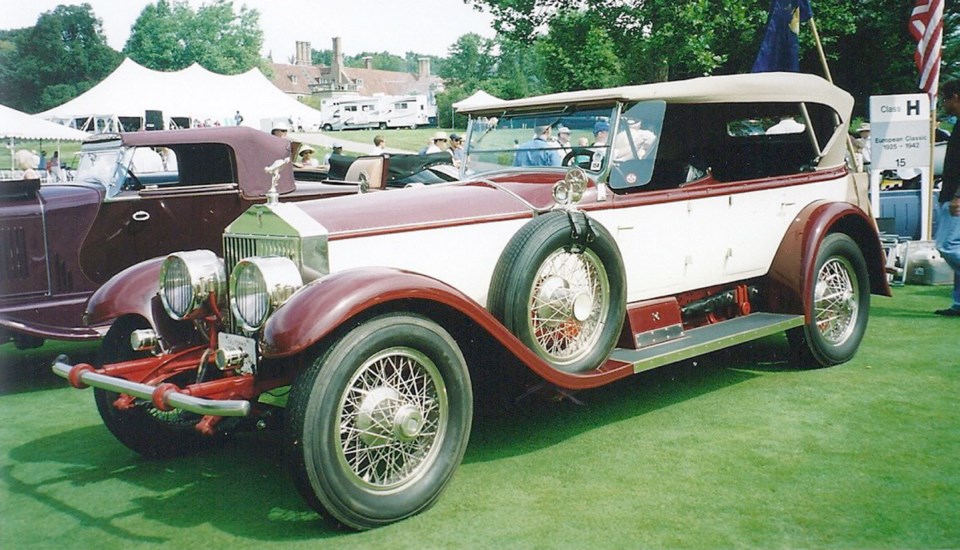Rolls-Royce is the grandest of grand old English car brands. And even though it is now in the hands of Germany’s BMW, it is still living off its heritage of being called “the best car in the world.”
It may come as a surprise, therefore, to learn that while it is intricately associated with Britain, Rolls-Royces were also built in the United States for about 10 years.
Rolls-Royce was founded by Henry Royce, a Manchester electrical equipment manufacturer, and Charles Rolls, a pioneering London automobile dealer. The company began making cars in 1904 and was incorporated in 1906. The combination of Royce’s superb engineering and Rolls’s outstanding promotional and sales abilities were so effective that the Rolls-Royce soon established its “best car in the world” reputation.
The model that consolidated this esteem was the Silver Ghost, built from 1907 to 1925, with a hiatus during the First World War. That one model could continue in production for so long, albeit with development and refinements along the way, demonstrates the soundness of the original design.
But Rolls-Royce management knew that even a car as venerable as the Silver Ghost had to eventually retire, and in 1922 it phased in the 20 Horsepower (for taxable, not brake, horsepower) model. It was smaller and lighter than the Ghost, making it more suited to the gradual move away from chauffeur-driven to owner-driven Rollses.
The U.S. was an important Rolls-Royce market, but heavy American import duties were hurting sales. So in 1920, Rolls-Royce decided to counter by establishing Rolls-Royce of America. It obtained an ex-American Wire Wheel Co. plant in Springfield, Massachusetts.
Rolls-Royce had already created a technical beachhead in the United States by sending a number of technicians over to train Americans in building First World War Rolls-Royce aero engines. The war ended before they got into production.
The Silver Ghost went into production in Springfield in 1921, although the conversion to left-hand drive was not accomplished for a couple of years.
The Silver Ghost’s replacement, the New Phantom, later called Phantom I, was introduced in Britain in 1925. It was to be built in Springfield too, although the conversion to left-hand drive required extensive modifications, including moving the intake and exhaust manifolds from the left side of the engine to the right. The result was that American-built Phantoms didn’t appear until 1926. In addition to left-hand drive, there were other differences. American Phantoms had six-volt electrical systems instead of the British 12-volt. And early American Phantoms had only two-wheel brakes, although these were later recalled and retrofitted with four-wheel brakes.
American Phantoms also had some unique features, including a disposable oil filter, thermostatically controlled radiator shutters for better engine temperature control and a one-shot chassis lubrication system.
The practice when buying an ultra-luxury car, including Rolls-Royce, was to order the chassis from the factory and commission a coachbuilder to fit a custom body. This carried over to America, and Springfield Rollses were bodied by some of the finest American coachbuilders including Brewster, Hibbard, Merrimac and Willoughby.
Some Rolls owners even had two bodies, a closed one for winter and an open one for summer. They were usually painted in the family colours, sometimes to match their horse-racing silks. Coachbuilders exchanged the seasonal bodies and stored and maintained them in the off-season.
It gradually became evident, however, that Americans preferred to buy a complete car, as was the usual practice when buying American luxury cars, rather than the two-step process. To accommodate this, Rolls-Royce of America purchased coachbuilder Brewster and Co., of New York, in 1925 to offer one-stop shopping.
Brewster’s plant was on Long Island, and it gradually supplied more and more Rolls bodies. The practice was to road-test the car during its transportation by having a Rolls-Royce chauffeur drive the bare chassis from Springfield to Long Island for body installation.
Most Rolls-Royces were sold out of their Fifth Avenue showroom in Manhattan, with the driver then taking the train back to Springfield. It is estimated that about 800 of the approximately 1,200 Springfield Phantoms produced had Brewster bodies.
The English Phantom I was replaced by the Phantom II in 1929, but with the advent of the 1930s Depression, Rolls-Royce of America could not afford to make the changeover. It imported some Phantom II chassis and fitted them with bodies, but by 1931 it had stopped production. The plant struggled on until 1935 before finally closing.
Thus the grand experiment of building British Rolls-Royces in America ended after 10 years. Although Rollses continued to be imported, most Americans seeking luxury cars were opting for such homegrown and more reasonably priced makes as Duesenbergs, Cadillacs, Lincolns and Packards.
